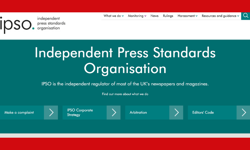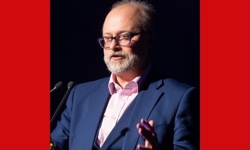These are exciting and challenging times for media businesses, with pressure on advertising revenues, rapid changes in technology causing shifts in how people consume media, and apparently infinite free online competition. However, there seem to be plenty of pioneering specialist media owners who are grasping the opportunities to expand their brands across print, live events and all types of digital media. Many of them came together at the Specialist Media Show in Peterborough to share ideas, war stories and swap tips with their peers.
This article summarises the main insights from the conference sessions, proving that with the right attitude, and the willingness to learn from one’s peers, the future is indeed bright for specialist media.
How events can bring a media brand to life
Trevor Foley of tfconnect showed how live events cement relationships and build communities, and how event visitors are receptive to sponsors and exhibitors, with many examples of successful media brand event launches, from Grand Designs to the Gadget Show to Marketing Week Live. The key to great events is a blend of content, networking and entertainment, as important for B2B audiences as it is for consumer shows. Event organisers need to become choreographers and entertainers. The payoff is that events reach new audiences – Marketing Week added 10,000 names to their prospect list with their Live events. They can also create a group of enthusiastic advocates who will spread the word about your media brand.
There are plenty of real-life examples of media businesses profiting from events. Peter Harris from Centaur showed how their regional homebuilding events drive subscriptions for the magazine. Mark Elliott of Time Out explained how Time Out Live uses the power of the registered database to fill comedy and music events in London. Claire Jenkinson of RBI focussed on B2B conferences, and stated that the holy grail is to combine the “fear” factor for delegates and satisfy the “greed” of sponsors who want to reach a quality audience. Her top tip is to “ask the audience” after each event to make future conferences more relevant.
Beyond the paid content debate – building value from free online content
Charging for online content can be an uphill struggle, so why not use the reach of the web to find new customers and sell them other things? Craig Hanna of Econsultancy opened with the story of how they use their highly ranked blog to draw an audience of digital marketers, amass 100,000 (free) registrations and then build a business around training courses, events, supplier listings and data services to the 5% who are prepared to pay. They never miss an opportunity to cross promote – small links on their blog to their subscription-only reports drive significant revenues. To succeed, Craig explained, publishers will have to be agile, ready to test and launch in weeks not months. Econsultancy uses its Twitter feed from its customers as a major source of NPD ideas.
Louise White of Incisive expanded on the opportunities for publishers to use social media to find the key influencers in even very niche markets. Steve Kemish of Cyance provided tips on how to use email to build relationships with new prospects, advising media owners to limit the amount of data requested upfront, and resist the temptation to propose after the email equivalent of a speed date!
Jenny Moseley provided wise counsel on managing, merging and exploiting databases – an important skill given the many data sources media businesses are using to build their reach.
Making new digital media pay – digital editions, mobile, iPad, video...
Whilst it’s easy to get caught up in the hype around mobile apps and in particular the iPad, it’s harder to work out how to drive value from new digital media. Some specialist media owners appear to have cracked it though, and we heard from a few who were prepared to share their tips. The Spectator has sold 2,000 iPhone apps, and has a mark 2 version ready to roll. More interesting is the fact that since they launched the mobile app, they have seen print subs climb by 600 and newsstand sales grow – proof perhaps that new digital formats provide excellent sampling opportunities for traditional brands?
Graeme Gourlay of Circle Publishing exhorted publishers not to underprice digital editions – he has seen great success converting British Sub Aqua Club members to the digital edition of Dive magazine, and offers digital editions to overseas subscribers too. They also work well for advertiser-sponsored supplements. Peter Houston of Advanstar passionately argued the case for designing digital editions specifically for the medium – using the landscape format of the screen, reducing copy, and adding links and interaction. He has found that reducing pagination and increasing frequency has improved time spent reading digital editions, and is a strong proponent of seeding digital edition content on social media. Advanstar’s digital editions are profitable as they are highly valued by advertisers.
Factory Media have been quietly experimenting with iPhone apps across their portfolio of action sports titles, and now see 6% of their paid circulation from this medium. They are pleased with the global reach of their apps, and over the last few months, the emphasis has shifted from single copy sales to longer term subscriptions. So far they have focussed on simple PDF style apps, but plan to test more bespoke versions. Their MPORA action sports video app has seen longer viewing times on mobile than on their web-based version.
The rise of digital editions online and on mobile devices has raised the profile of video. Fiona Ryder of Stream Exchange describes it as the “natural human medium”. She explained the principles of planning video content carefully, to keep production costs low, then publishing on multiple channels and making it easy for users to share on social media.
Secrets of successful commercial partnerships
Most publishers are feeling the pressure from advertisers to keep yields low on standard online ad units. One response is to create bespoke multi-media campaigns for key advertisers that focus on driving new business for them. Duncan Tickell of Magicalia and Paul Hood of Mirror Group shared several case studies using this approach. 3am has created a “juke-box” for Universal Music with ecommerce integrated and its remuneration includes a revenue share of sales. Bike Magic worked with Trek to promote a ‘design your dream bike’ tool, and built a large database. Magicalia parenting sites used quizzes to publicise the role that soothers play in preventing cot-death.
The bespoke approach requires a shift in mind-set as commercial and editorial teams need to work closely with clients to understand the overlap between the media brand’s audience and the clients’ objectives, then craft a mix of content, competitions, engagement and supportive advertising to deliver the objectives. It’s less about selling space and more about helping the client’s business grow. With unlimited audiences available through social networks and portals, publishers have to deliver engagement and drive business to maintain their revenues in a world of low-rate ad networks. It doesn’t have to require expensive development; Paul Hood set up an agreement with a tech provider for the Universal campaign where they were paid on a revenue share as well as the media owner. Revolutionary stuff, but probably easier for specialist media with highly engaged audiences and top-notch content.
How traditional publishers can learn from born digital content businesses
Specialist media owners whose core business is print and events sometimes find it hard to get into the mindset of the pure-play digital content business. Miles Galliford of Subhub provided a rare insight into the strategies of successful online publishers. The starting point is what Miles terms “freemarkable” content – high quality stuff for free. This draws an audience, and then the core objective is to acquire email addresses through offering even more free top-notch content. The shift in thinking is that the primary objective is to build an audience. Once this audience is engaged, then, and only then, can the publisher start to monetise, and that will need to comprise a wide range of revenue streams – Miles listed over 35! Fascinating stuff – look out for Miles’ forthcoming book, the Funnel of Trust, for a step by step approach plus lots of case studies.
Getting the balance right: print, live and digital
Wherever you start from, all specialist media are based on building an audience through great content. Relationships can be cultivated through a mix of print, live events, web and digital media. Successful media businesses recognise this, wherever they start out from. Econsultancy began as a digital content business, that expanded into events, and has just launched a printed magazine to support one of its events. The Gadget Show started on TV, then launched an event, and now has published a magazine. Homebuilding started as a magazine, then added events, and then an online version. MyHobbystore began with magazines, added websites then events and even ecommerce. The mix may be different for each market, but the key is meeting a niche audience’s needs in many different ways, and working with commercial partners to provide them with profitable ways to reach that audience.
See video highlights from the show and read visitor comments at: www.thespecialistmediashow.com.










